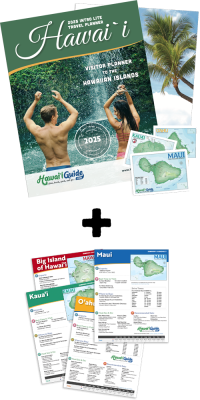Uncap your pens and open the record books. The state of Hawaii is now one-of-a-kind in yet another category: taxes.
Since mid-summer, something of a legal battle has been going on in the legislature over a bill called HB 862. The bill is essentially a proposed shakeup of how the state allocates tourism funds - something which, you’ll likely realize, is no small part of the state’s economy.

By slashing out nearly a quarter of the Hawaii Tourism Authority’s budget and repealing the allocation of transient accommodation tax funds to counties, supporters of the bill have argued that counties may see a substantial increase in revenue. That’s because instead counties will be granted the freedom to collect and use their own accommodation tax, as high as 3%.
This sounds appealing to the many different islands and counties that have until now had to settle for a comparatively small share of the state’s overall 10% accommodation tax. In July of 2021, HawaiiNewsNow quoted Maui County Council Chair Alice Lee saying the change would “help tremendously.” She also estimated it could increase the island’s revenue as much as threefold.
Others were less convinced; most notably Hawaii’s “very concerned” governor David Ige, who swiftly vetoed the bill in fear that it would “severely damage HTA’s ability to focus our efforts to move beyond marketing and really get to destination management.” The governor was undoubtedly referencing an ongoing public discussion about how the HTA’s $100 million budget is - or perhaps is not - being used in its aim to market the state. Lawmakers were apparently not impressed by his worries, overriding his veto on July 6th, 2021.
Maui wasted no time in trying to implement the new tax. The island’s eagerness is likely due to the increase in tourism it has seen since travel restrictions started to be lifted. The increase has been so sharp it recently made the island actually ask airlines to send less tourists. Maui is clearly quite hungry for the boost in tax revenue and feels that the existing 10% distribution system was woefully inadequate.
According to the House Finance Chair, Rep. Sylvia Luke, the HTA distributed the state-level tax revenue based primarily on the number of visitors overall, rather than the number of visitors per capita. This resulted in Oahu getting a much larger portion than, in her view, was justified; and likewise, Maui and other islands getting considerably less than needed.
All of this can start to sound frustratingly complex, but read between the lines and you’ll see an obvious underlying reality that is profoundly simple: Hawaii needs more money. Having apparently been unable to satisfactorily allocate funds with the existing state-level system, a new, more granular system has been implemented; and the net result of that system is that Hawaii will now soon have, by far, the highest state lodging tax rate in the country.

All put together, Beat Of Hawaii estimates the combined tax could be as much as 18%. BOH also reported on October 20th, 2021 that Maui Mayor Michael Victorino had signed the bill into law, making it effective as of November 1st, 2021. Kauai has also reportedly adopted the increase.
What all this means for the individual visitor is that hotels and other various tourism-related accommodations will probably become more expensive - potentially, based on the math, a lot more expensive. Of course, as Governor Ige alluded to in his July statement, the purpose of all this is “destination management.”
In a livestream just days after his veto, Ige elaborated that destination management would focus on problems such as illegal parking, traffic, and “friction” between tourists and locals. He also decried what he called “unfettered access to the state of Hawaii” and expressed a need for “getting the visitors we want.”
A cynical reading of all this could be that the Hawaiian government is unhappy with not only how many visitors the state is receiving, but which visitors as well; and as a result, they have simply opted to make the state an even more expensive tourist destination than it already was before.
Of course, it isn’t quite that simple. Nearly 3 million visitors came in just the first half of this year, which is inevitably a huge logistical issue for a remote chain of relatively small islands, no matter how infrastructurally adept or well-funded.
Diverting funds to support infrastructure changes that better accommodate the massive influx of visitors seems like a good idea. The dilemma rests in how the state can achieve this without excessively discouraging prospective visitors due to high costs.
FREE 2025 DOWNLOADS
Hawaii Intro Visitor Guide
+ Our Summary Guidesheets!
Includes the top must-see & do attractions, best times to visit, a monthly weather & visitor summary, and our tips on how to save when booking your car rental, tours, and activities. Plus, grab our free Hawaii Summary Guidesheets.



